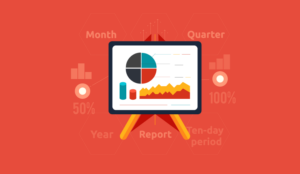Debt collection companies are now turning to speech analytics in order to help them reduce delinquencies and mitigate losses, allowing businesses to maximise their accounts receivable recovery.
Collection analytics aids understanding of customer preferences and behaviour patterns, which in turn helps in developing better collection strategies.
Collection strategies are primarily needed to improve productivity. It is not feasible to hire agents (which costs money) to keep making collection calls from a list of payments due.
So, these strategies help to determine which accounts have a higher probability of losses, categorise the different types of customers, and prioritise and target customers.
How Collection Analytics Works
Collection analytics gives valuable information about the customer which can help develop varied collection strategies in different stages of obtaining due payment.
There are primarily three stages of collection, which can be broadly classified as the early stage, the mid-stage and the final stage of collection.
In the early stage of consumer default, there is a higher chance of self-cure (i.e., customers are likely to pay by themselves without the need to make collection calls).
Analytics can play a key role in identifying which customers, based on their behaviour pattern (such as payments made before or after due date) are likely to pay on their own.
The mid-stage deals with customers that the collection agencies need to focus their efforts on. Here again, analytics can help segment the customers as high, medium or low risk.
A risk score is a metric indicating how likely a consumer is to make payments on time, while a collection score is a metric indicating the most probable amount a delinquent consumer is likely to pay.
Collection strategies can then be targeted to recover maximum money from high-risk customers and to determine follow-up intervals. A possible change in loan terms for the medium- and high-risk groups is also determined.
The final stage normally deals with considering the account as a write-off. However, collection analytics steps in to decide whether the payment default is due to mismanaged finances, bad economy or the financial situation of the customer. These parameters help in deciding a hardship plan and renegotiation terms to retain the customer.
What Types of Debt Collection Strategies Do Analytics Help Develop?
Collection analytics help in developing different strategies for maximum efficiency. Some of these are:
- Customer Segmentation: Customers and accounts are segmented and prioritised based on a score assigned to them.
- Contact Time: History of response data and outbound calls made helps determine the best time to contact the customer. It helps in initiating calls at times and places where the customer is most likely to answer. This increases contact efficiency and allows for directing efforts towards high-risk accounts.
- Contact Script: Based on the profile of the customer, analytics can help in setting the correct tone for agents to make their pitch.
- Call Rotation: Different calling strategies are set in place so that the customer is contacted at different times during the day and multiple times a week. This ensures that the customer is not expecting a collection call, which increases the likelihood of the call being answered.
- Contact Methods: Collection analytics help in making cost-effective decisions by making the right choice of contact methods. Some customers respond well to technology such as voicemail and online text/chat, while others are more likely to respond to print mail with payment options and settlement offers. Depending on the stage of delinquency, some customers might need to be contacted by phone calls.
Benefits of Collection Analytics
Collection analytics is beneficial for organisations in developing and implementing an overall collection strategy. Key areas impacted by collection analytics include:
- Staffing Needs: Estimating the number of collection staff is the most important aspect of cost savings. Collection analytics helps organisations employ the right number of agents with the right skills.
- Accurate Penetration: Collection analytics plays an important role in reaching targeted customers. The data correlation between attempted calls to actual contact with the customer is a valuable score given to agents when making calls.
- Bonus and Incentives: In order to increase agent efficiency, collection analytics helps in determining the rewards or incentives that need to be associated with the collection. For example, if there is an incentive attached to the dollar amount collected, agents are likely to be more aggressive when seeking payments.
Collection analytics can help to increase collection efficiency, reduce costs, increase recovered amounts, enhance customer service, increase customer retention, reduce debt write-offs and maximise account receivables.
Furthermore, collection analytics gives insights into customer behaviour and delinquency that help prepare customer profile data and create customer segments.
All of these analytics help in creating flexible collection strategies.
For more information about CallMiner - visit the CallMiner Website
Call Centre Helper is not responsible for the content of these guest blog posts. The opinions expressed in this article are those of the author, and do not necessarily reflect those of Call Centre Helper.
Author: CallMiner
Published On: 10th Aug 2018 - Last modified: 14th Aug 2018
Read more about - Guest Blogs, CallMiner






 CallMiner is the leading cloud-based customer interaction analytics solution for extracting business intelligence and improving agent performance across all contact channels.
CallMiner is the leading cloud-based customer interaction analytics solution for extracting business intelligence and improving agent performance across all contact channels. 












